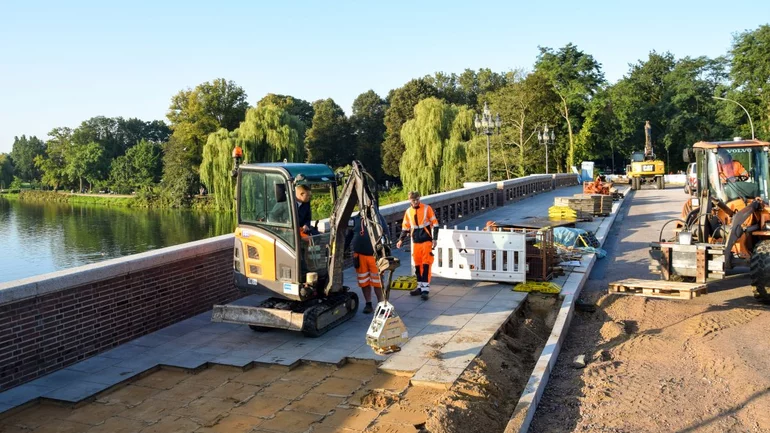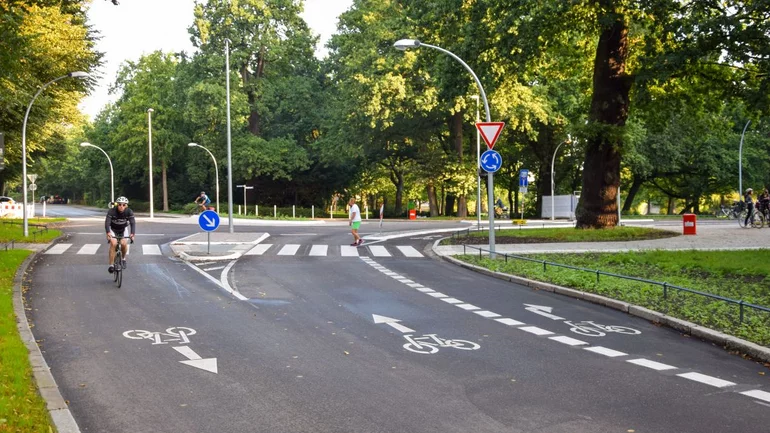Once around Lake Alster by bike
The Free and Hanseatic City of Hamburg is gradually putting its safe cycling concept into effect. There are already 14 cycling routes, so-called Veloroutes, interconnecting the city’s districts. Now, over the course of several construction phases, the traffic routing around the Außenalster (Outer Lake Alster) is being adapted to make it more bike-friendly. BPR Künne & Partner is undertaking this redesign for the Harvestehuder Weg to Bellevue section.
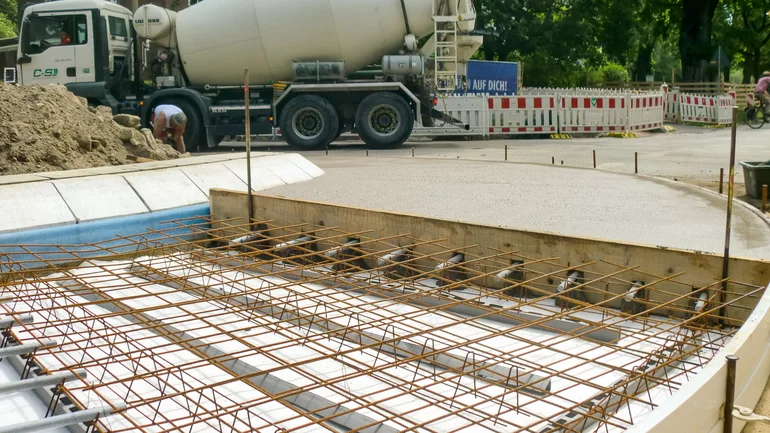

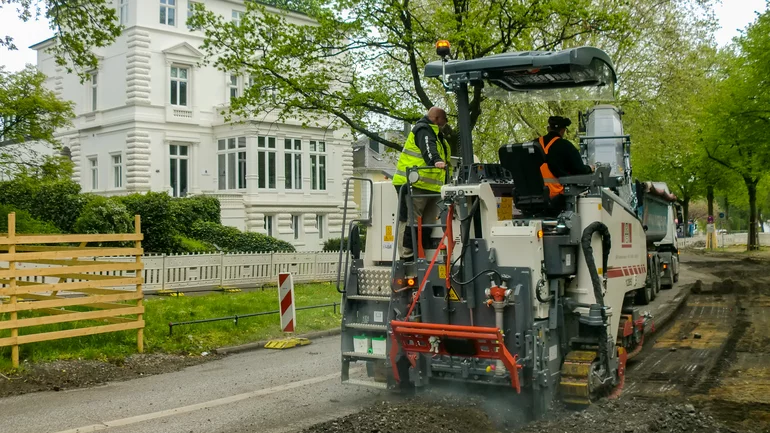

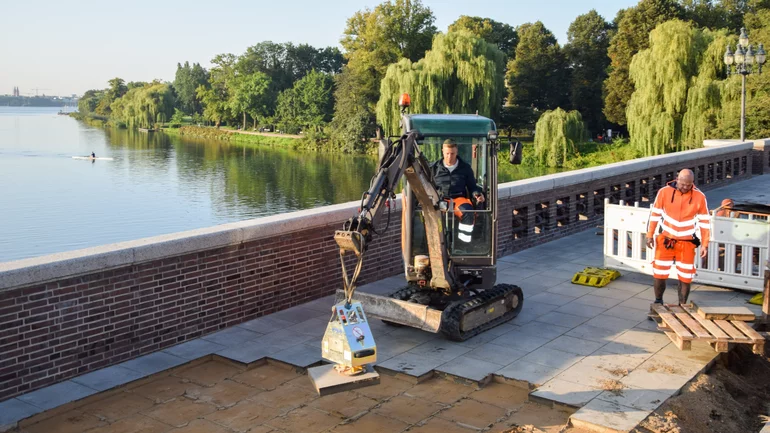
Surrounding the Außenalster lies Hamburg's extensive lakeside recreational, sports and leisure paradise, which, due to its central location, has for generations been home to the most exclusive residential areas of the Hanseatic city. Here, with an area of approx. 160ha, the traffic routing is to be adapted, in several stages, to suit the needs of a modern bike-friendly city. Hamburg began to develop a concept for safe, everyday cycling several years ago. There are currently 14 cycling routes under the umbrella term Veloroutes, which connect the individual districts with each other and with the City/ Hafencity. The section currently being developed as a cycling route is part of cycling route 4, which runs from the Rathausmarkt via Winterhude to the airport before continuing further north. Following the completion of the planning and tendering phase, we are currently constructing the Alster cycling route for the Landesbetrieb Straßen, Brücken und Gewässer (LSBG) from Harvestehuder Weg, Krugkoppel and Fernsicht to Bellevue.
Subsection 2a
In this subsection, part 2a, the main focus is on the redistribution of the existing traffic areas with accompanying upgrading of lighting and drainage facilities, as well as the laying of new cable and reserve conduit routes. During construction, special attention will be paid to the up to 150-year-old trees along the banks. Since some of the roots have developed very close to the surface over the decades, the ancillary facilities can often only be constructed as a self binding gravel covering. The work being carried out in the vicinity of existing trees - deconstruction and re- construction – will all be coordinated in advance under ecological supervision. This means that existing paving slabs can often only be removed using vacuum equipment. A suction excavator will be used for the necessary soil removal so as not to damage the fine roots underneath. In order to alleviate soil compaction caused by parked cars, a tree-crown-wide area under the trees will be subjected to high-pressure aeration using soil lances with additional substrate supply. When laying the new kerb and building driveway access to private properties, the old granite stones previously taken up during deconstruction can mostly be reused. Many stretches of road will be narrower, leading to the creation of green spaces which will be actively protected against unauthorised driving and parking by strong fencing.
Spatial Separation
The primary objective of the Alster cycling route is to achieve spatial separation of pedestrians and cyclists in order to actively minimise the potential for conflict and danger that has increased thanks to the rapid increase in e-bikes and now also electric scooters; not least due to the higher speeds achieved by e-mobility. It is clear that motorists will have to get used to the increased rights of cyclists inherent in the establishment of bike lanes, as in future they will have to share road space narrowed by up to 2.75m in each direction with the "soft bikers". In other sections, individual motorised traffic will have a comfortable 3m lane per direction, and cyclists an additional 2.25m. At the Harvestehuder Weg - Krugkoppel junction, a newly created roundabout will replace the old traffic light intersection, thus ensuring both safe and speedy turning or through traffic. Cyclists travelling towards Winterhude will be kept separate from motorised traffic.
Subsection 2b
Over the next two years, the bike lanes in section 2b will be continued with the redesign and renewal of the streets Bellevue, Fährhausstraße, Schöne Aussicht and Eduard-Rhein-Ufer, so that with the remodelling of the east bank along the Außenalster, an uninterrupted, fast and convenient cycling connection will finally have been created.
